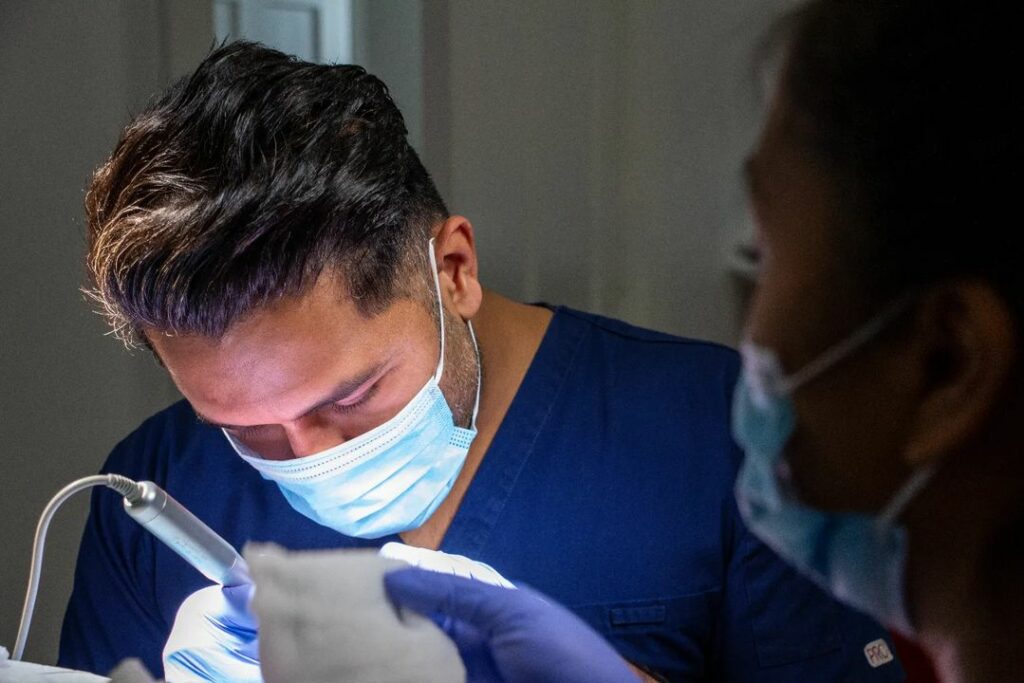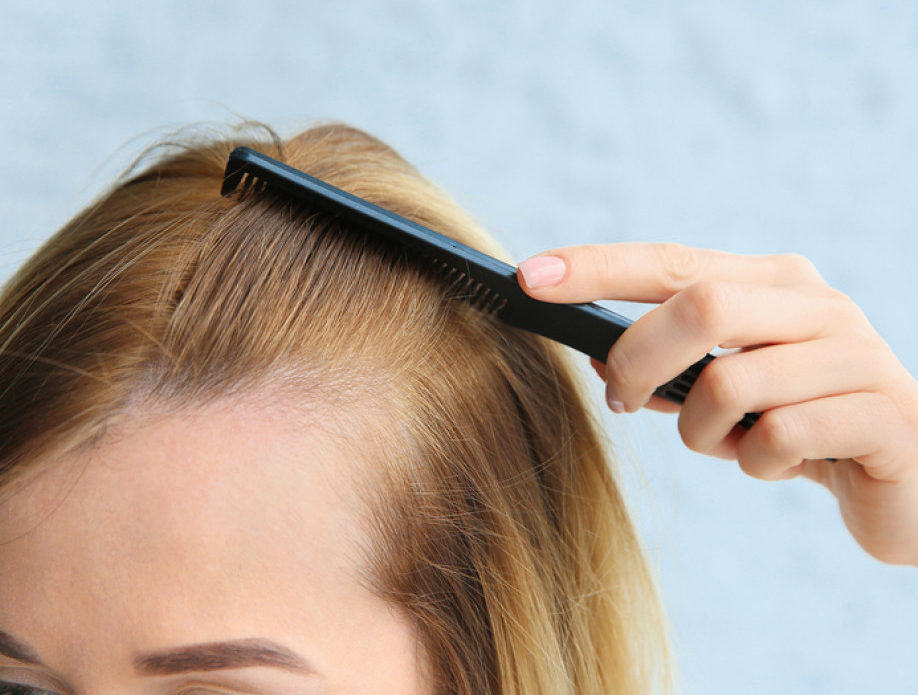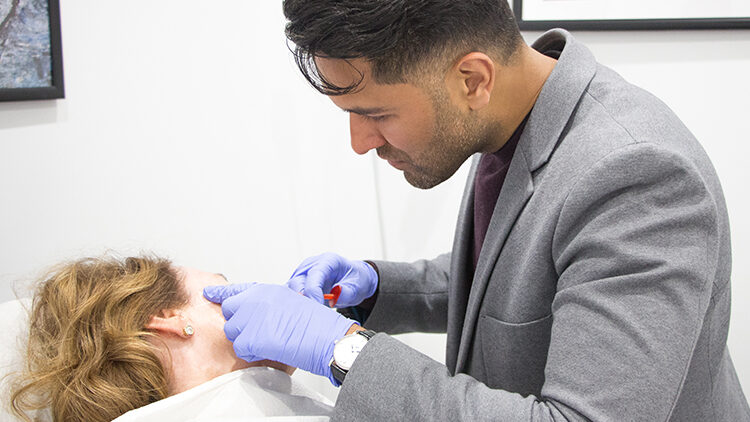What is Female Pattern Hair Loss?
This process is similar to hair loss that occurs in men, but the early signs often present themselves differently for women’s hair. Male hair loss patterns often start at the frontotemporal angles (near the temples) and slowly recede back towards the crown. Female pattern baldness most commonly starts at the part line near the crown. Of course, hair loss can occur anywhere throughout the scalp, but a vast majority of cases will follow this trend.
We offer two different methods for hair loss treatment, Follicular Unit Excision (F.U.E.) and Follicular Unit Transplant (F.U.T.).
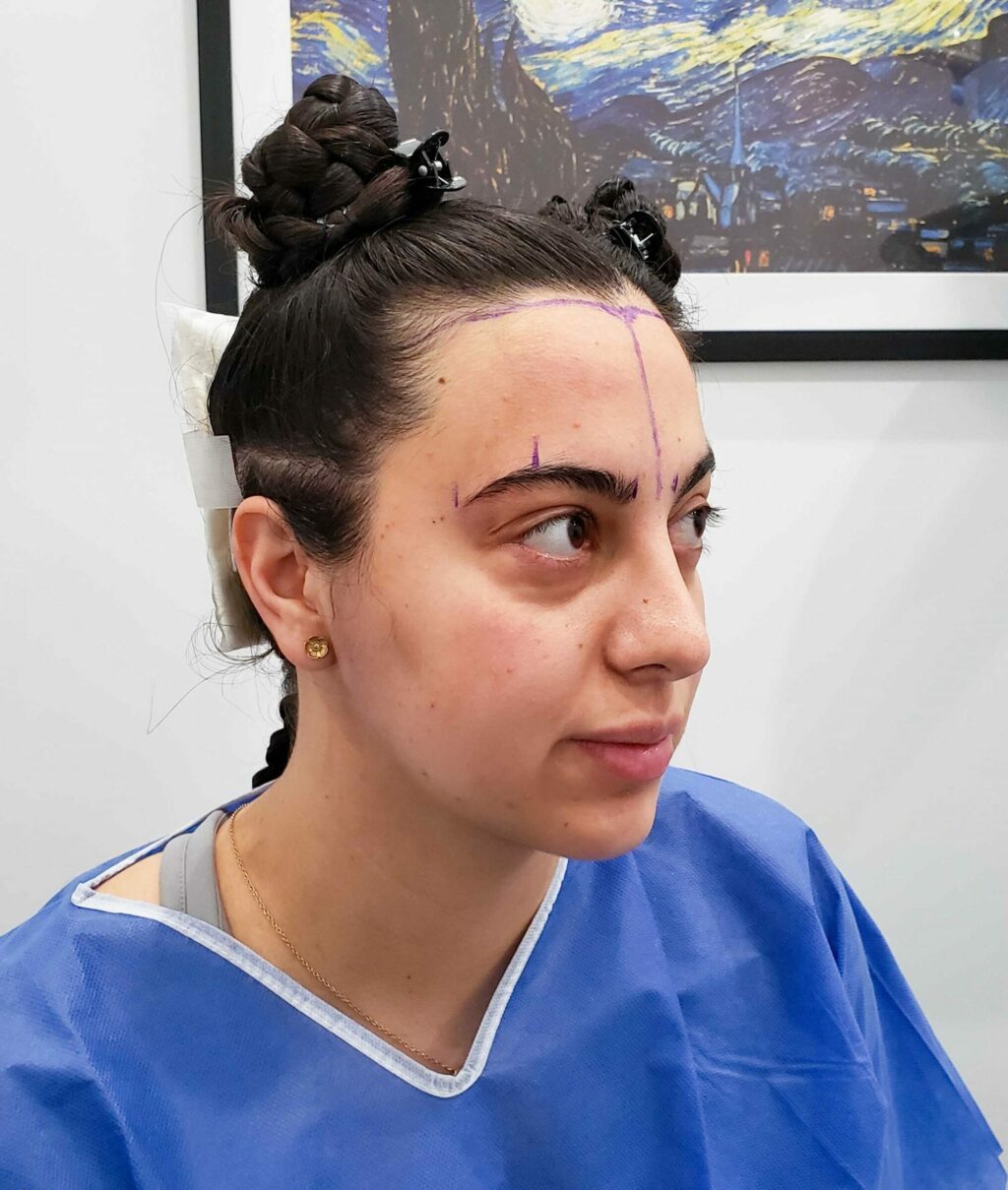
Candidates for Women’s Hair Transplant Surgery
Relocating Hair to Fill, Adjust, or Densify
At Sharma Skin & Hair Surgery our primary technique for treating hair loss for women is hair transplant surgery. While there are many different surgical techniques, a majority of them act to relocate hair from one part of the scalp to another. The hair transplant procedure is best used for addressing the following female hair loss issues.
Traction Alopecia
This type of hair loss is not caused by any medical condition. Over time some hairstyles, including braids, ponytails, or man buns can put enough force onto the follicle to cause it to fall out.
Female Pattern Baldness
This inherited condition is noticeable in distinct patterns of hair loss. Unlike general thinning of hair throughout the scalp, this inherited condition often starts at the forward hairline or vertex – also known as the crown.
Alopecia Marginalis
Often mistaken for traction alopecia this type of hair loss is more commonly seen in women of African American descent. This type of hair loss is often seen at the Frontotemporal regions and sweeps across the frontal hairline.
Scalp Trauma
This external cause of hair loss may include burn victims, deep scarring from physical trauma, or chemical related burns.
Scar Revision
Females who have scars or wounded areas on the scalp that are not hidden by the surrounding hair may consider micro hair transplant surgery to fill in and cover the gap. Scar revision consists of removing & re-suturing the incision using light controlled pressure.
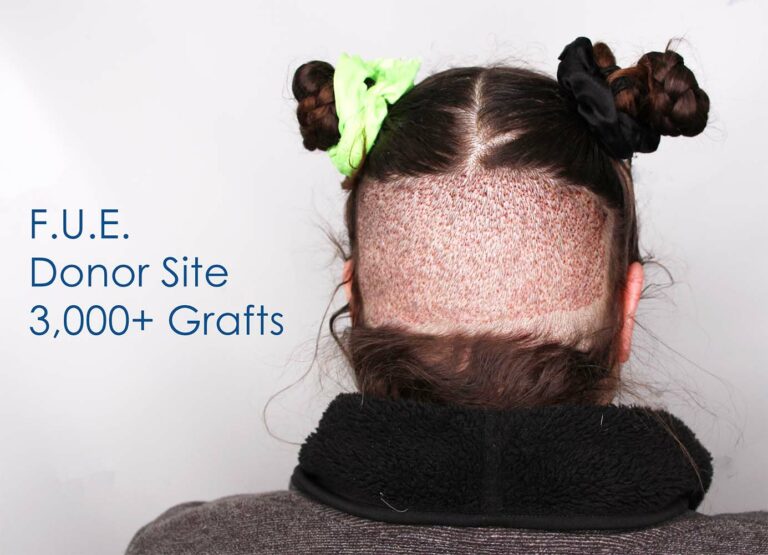
Follicular Unit Excision (F.U.E.)
The F.U.E. hair transplant process is different in that the head must be shaved so the hair follicles can be harvested individually. Since a smaller area is harvested, a minimally-invasive surgical tool can be used to avoid the appearance of scars. This tool is a small punch that keeps the hair follicle in the scalp tissue, leaving a small dot behind. The benefit is that no scalpel is needed for the procedure. The F.U.E. method is quickly becoming the most popular choice for men requiring hair transplant surgery. The low downtime, light scaring and success rate are hard to beat.
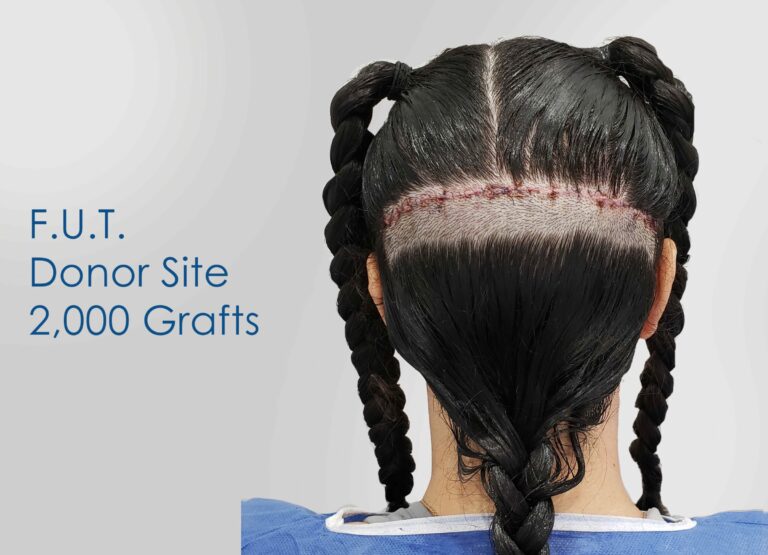
Follicular Unit Transplant (F.U.T.)
The F.U.E. hair transplant process is different in that the head must be shaved so the hair follicles can be harvested individually. Since a smaller area is harvested, a minimally-invasive surgical tool can be used to avoid the appearance of scars. This tool is a small punch that keeps the hair follicle in the scalp tissue, leaving a small dot behind. The benefit is that no scalpel is needed for the procedure. The F.U.E. method is quickly becoming the most popular choice for men requiring hair transplant surgery. The low downtime, light scaring and success rate are hard to beat.
Redness after Hair Transplant Surgery
Nurse Cindy, who assists Dr. Sharma in every hair transplant surgery at the clinic, covers some commonly asked questions about pinkness following hair transplant surgery.
It is important to understand that irritation and redness follows any invasive procedure. The incisions made during your hair transplant may be very small in size, but we are often making over 2,000 of them in a relatively short period of time. Everyone’s healing response time is different and we want each patient to be aware of how long their downtime may be.
Eyebrow Hair Transplants
Hair transplant services aren’t limited to the scalp. The cause of thinning eyebrow hair can include: facial scars due to burns or injured skin, alopecia, over-plucking, and aging. These problems can be corrected by using donor hair to fill in the empty spaces.
Whether you have no eyebrow hair or your eyebrows are thinning, a hair transplant procedure can be used to restore the overall appearance of the eyebrow. Some patients choose services to repair damaged areas of the eyebrows. Other people choose to have full transplant services to design a natural appearance by restoring missing eyebrows.
Get more information
Knowledge Centre
Hair Transplant Alternatives

We understand that losing your hair can be a confidence killer. Many people feel self-conscious when they notice thinning or receding hair. While a hair…
Hair Transplant Graft Numbers: Why More Isn’t Always Better
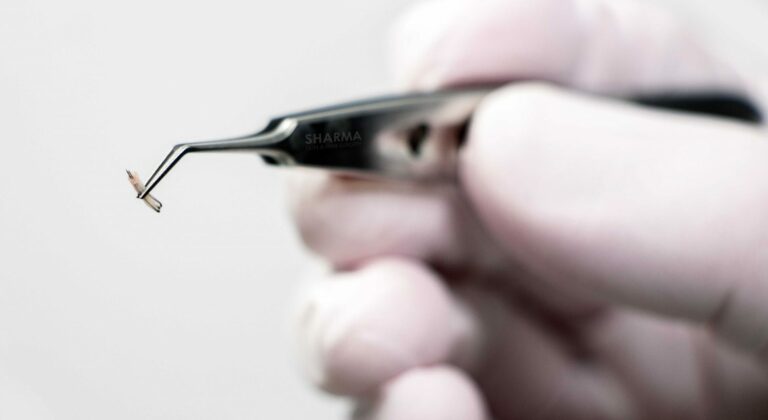
Hair transplantation has become an increasingly popular solution for those seeking to restore their hair. However, the industry has seen a disturbing trend: a focus…
Read article on Hair Transplant Graft Numbers: Why More Isn’t Always Better
DHI Hair Transplants: Separating Fact From Fiction
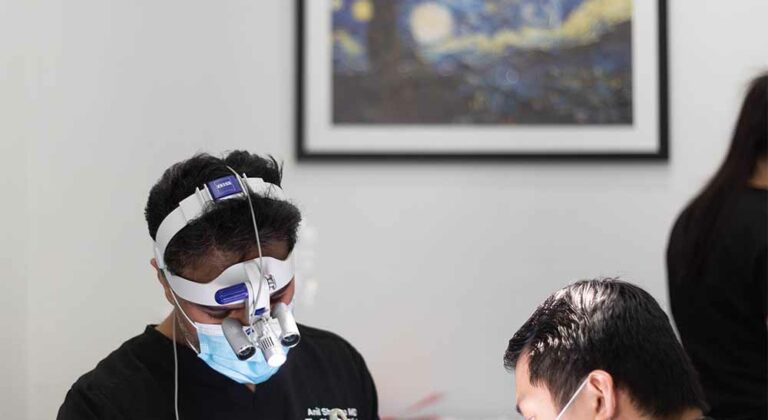
The hair restoration landscape is constantly evolving, with new techniques and technologies emerging regularly. One term that has gained significant popularity in recent years is…
Read article on DHI Hair Transplants: Separating Fact From Fiction
Female Pattern Hair Loss FAQ
We’ve compiled a list of some of the most common questions asked during our initial consultation
The cost of a hair transplant depends on the procedure type and the number of grafts transplanted. Dr. Sharma performs the procedures manually in order to ensure the most natural look possible. Hair transplant procedures generally start at $6,000.
Even though hair loss is an unavoidable experience for many people, it is possible to turn back the clock so you can regain a youthful appearance. Dr. Sharma has a keen artistic eye and years of experience creating natural hairlines. Dr Sharma’s methods are designed to create results that look like you never had a procedure in the first place.
If you are ready to feel confident with a full head of hair, we are here to assist. Contact us at Sharma Skin & Hair Surgery to schedule a consultation and learn more about the results you can expect from this modern treatment. View some of our results for crown hair transplants and hairline transplants.
A local anesthetic block is used which is very comfortable (the patient can even watch a movie if they so wish during the procedure).
Post-procedure, patients seldom require anything stronger than a simple analgesic such as Advil.
Patients are then followed up personally by Dr. Sharma. He will always consult with the patient the day following the surgery and ensure they are sent home with full after-care instructions and contact telephone numbers for the clinic (24 hours per day for the first three days post-surgery).
Book now
Talk to a Hair Transplant Expert in Edmonton, Alberta
Contact us for a free virtual hair loss consultation and get started on your transformation today.
